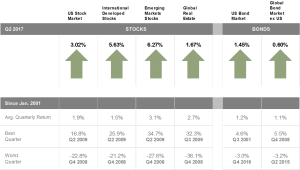The 401(k) Series #4: Health Care in Retirement

Funding your future can be extremely daunting and confusing. One of the hardest expenses to plan for in retirement, could also be the largest one. Young or old, it’s crucial to plan for steep medical expenses and avoid the health care sticker shock that awaits. Medication costs continue to rise, and the out-of-pocket costs for other preventative services are astronomical. Over time, health care costs could exceed Social Security payments. And when we really break it down, it’s clear many Americans won’t be able to afford that once it happens. Let’s break down the problems and solutions:
1. Inflation is not keeping up with Health Care costs
Health-care costs for retirees are likely to increase an average of 5.5% annually over the next decade, which is triple the average inflation rate for the past 4 years, and double the cost of living adjustment on Social Security benefits. A worker 10 years from retirement should prepare, and person 20-30 years from retirement should beware. To put these numbers into context: if a 65 year old couple retired today, they would spend almost $30,000 more in total lifetime retirement health care expenses than a couple who retired in 2016.
2. Health care costs are rising faster than Social Security, so don’t expect Social Security to go very far
Reports have shown that a 66-year-old couple retiring in 2017 will need 59% of their Social Security benefits to cover all retirement health care costs. That doesn’t leave much left over for the fun you’ve been dreaming of. While some retirees can wait to withdraw Social Security until it pays more, it won’t completely close this gap. The cost of living adjustments simply aren’t mirroring the inflation of health care costs. And Social Security is a main source of income for most retirees.
It’s also very important to plan for Long-term care. Depending on how prepared you are for a long-term stay in a health care facility, you may need $75,000 – $90,000 per year for a private room in a long-term care facility.
3. Health care will cost $300,000 – $500,000
Health care will be one of the most significant retirement costs. Lifetime health care premiums will hit well over $300,000 for a healthy 65-year-old couple who retire in 2017. These estimates are just a starting point. When adding deductibles, copays, and other out-of-pocket costs into the mix, that number grows to over $400,000 in today’s dollars, if you’re healthy.
4. Prescription drugs will drain your budget
Anyone who makes regular trips to the pharmacy can educate the masses about the rising costs of prescription drugs. You can anticipate this cost increase to continue for the foreseeable future.
5. A longer lifespan will be expensive, especially for women
Advanced medicine and increased societal awareness has increased our life expectancy, and in turn increased the number of years we are paying for health care. Along those lines, we know that women will face higher lifetime health care costs because, they are expected to live on average two years longer than men.
At Park + Elm, we often talk about having a clear focus on the things we can control. So let’s assume 1-5 above are constants, and begin to prepare by controlling the things we can change. There are strategies to combat the issue of health care in retirement:
1. Take better care of yourself; Modify your physical behavior.
Managing your health, exercising and making health conscious decisions make health care more affordable. Making small lifestyle changes now, such as stopping tobacco use, exercising, maintaining cholesterol, could save several thousand dollars prior to retirement.
2. Start a Health Savings Account (HSA)
Most people aren’t aware that HSA’s can be kept into retirement to help offset medical costs. This is an opportunity to TRIPLE dip for tax purposes. Contributions to an HSA are tax deductible, investment growth is tax deferred, and withdrawals for qualified medical expenses are tax free. This is NOT a “use it or lose it” account, so contributions can be carried over for healthcare in the near or distance future.
3. Commit to a long-term savings plan
Those who start saving for retirement early will find it’s much more manageable to maintain their preferred lifestyle and pay for necessary expenses simultaneously. Even the smallest contributions can make a big impact throughout a lifetime. Take advantage of employer contribution plans and additional investment strategies to make the most of your savings plan. When calculating how much you need to retire, make sure to add at least $300,000 for health care. This is why planning well in advance for a successful retirement is so important
Trying to predict what will happen to Social Security and Medicare has proved to be way to difficult a task. What we know for sure is that there is a gap in Medicare coverage for copays, prescriptions, etc., and that gap needs to be factored into your long-term plan. We know that health care premiums are on the rise, and so are life expectancies. A financial advisor can help you create a long-term strategy to cover the gaps in insurance, and help you achieve peace of mind, so that you can retire with health coverage and enough funds to enjoy your non-working years.


